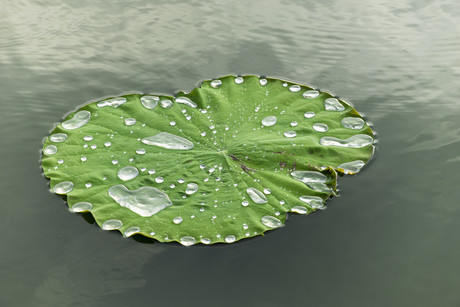Self-cleaning machinery for the food industry is getting closer

The whole food and beverage industry would love equipment that is self-cleaning, anticorrosion, antibiofouling, antimicrobial and has low friction resistance.
And this aim is getting closer thanks to a European team of researchers from Università degli Studi di Parma, Universitaet Stuttgart, Centre Technologique ALPhANOV, Raylase AG, Ecor Research SPA, BSH Electodomesticos Espana SA and Kite Innovation (Europe) Ltd who have joined forces in the TresClean project (high ThRoughput lasEr texturing of Self-CLEANing and antibacterial surfaces).
This consortium aims to demonstrate how high-throughput laser-based manufacturing can be applied to the production of plastic and metal component parts to create fluid repellent and antibacterial surfaces. High among the numerous industrial applications which can gain from functionalised surfaces is the cleanliness and the asepticity of machine parts for the food industry.
The team was inspired by the mechanisms with which some plants, such as the Lotus, make their leaves fluid-repellent. These leaves suggested the possibility of creating metal surfaces that reduce wettability and prevent bacterial adhesion.
The TresClean team is using high‐average power ultrashort-pulsed lasers to create a surface topography on metal sheets that duplicates the Lotus leaf surface and so prevents liquid adhesion. This topography is able to capture miniature pockets of air that minimise the contact area between the surface and liquids.
Professor Luca Romoli, Project Coordinator of TresClean, explained: “Lotus leaves keep themselves clean thanks to particular surface texture enabling water to stay as spherical droplets by preventing ‘spreading’. Under these conditions, bacteria do not get a chance to stick because the contact with the metal surface and the liquid is reduced significantly. In this way, with laser it is possible to create on metal surfaces an antibacterial topography without adding chemicals.”
Metal surfaces undergo a specific laser marking process, using innovative optical devices for common industrial use: ultrashort-pulsed lasers, but with high-average power, are used in combination with high-performance scanning heads by utilising an innovative beam delivery method enabling movements of up to 200 m/s.

In this way, technology developed by TresClean is able to perform stainless steel surface marking of 500 cm2 in less than 30 minutes. In early 2015, the existing production methods were only able to create 0.6 mm2 of these specific structures in 30 minutes — now TresClean has sped up the process making it 156 times quicker than before.
Professor Romoli estimates that TresClean could have its products ready within 2 years.
Initially aiming its product at machine parts for the food industry, TresClean hopes to make a significant impact on productivity: “Vats in milk factories need to be cleaned every 6–8 hours to avoid the exponential growth of bacteria. This hinders usage and therefore affects output,” Romoli said.
“By saving hours per day in cleaning, it will yield an efficiency improvement stemming from fewer sterilisation cycles and less cleaning time within production as a whole. This will also reduce energy consumption as a result of fewer cleaning phases making food production quicker, safer and more profitable.”
Professor Romoli sees long-term possibilities and implications for other sectors besides the food farming industry.
Norco Lismore ice-cream factory back in business after flood recovery process
After an 18-month flood recovery process that cost more than $100m, the Norco Lismore ice-cream...
Is the food industry ready for El Niño?
A pest behavioural expert explains some details about how El Niño could affect insect...
Otis oat milk manufacturing returns home to New Zealand
Ever since launching their company in 2018, Otis co-founders Tim Ryan and Chris Wilkie have been...












